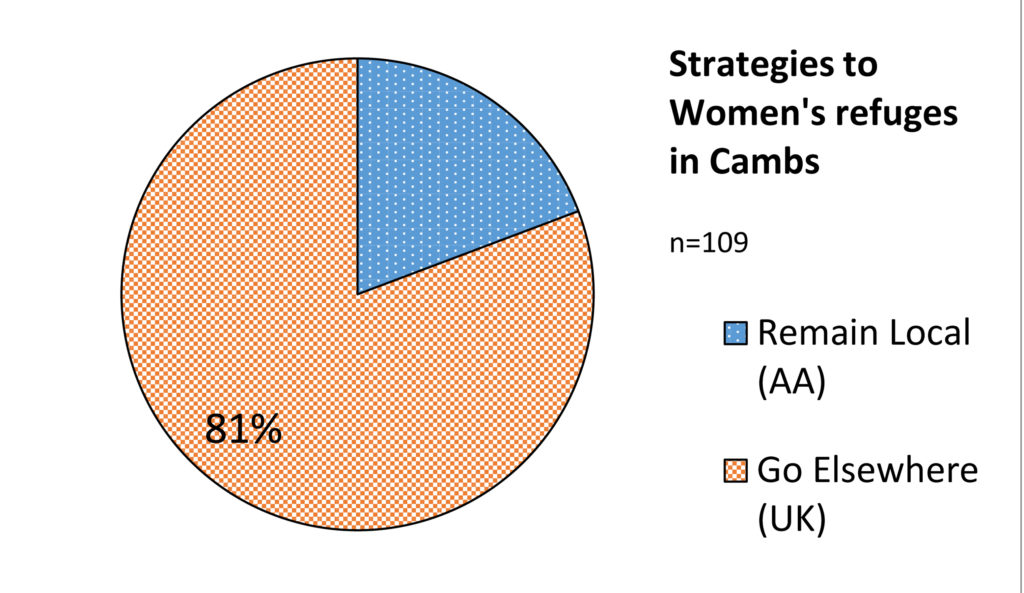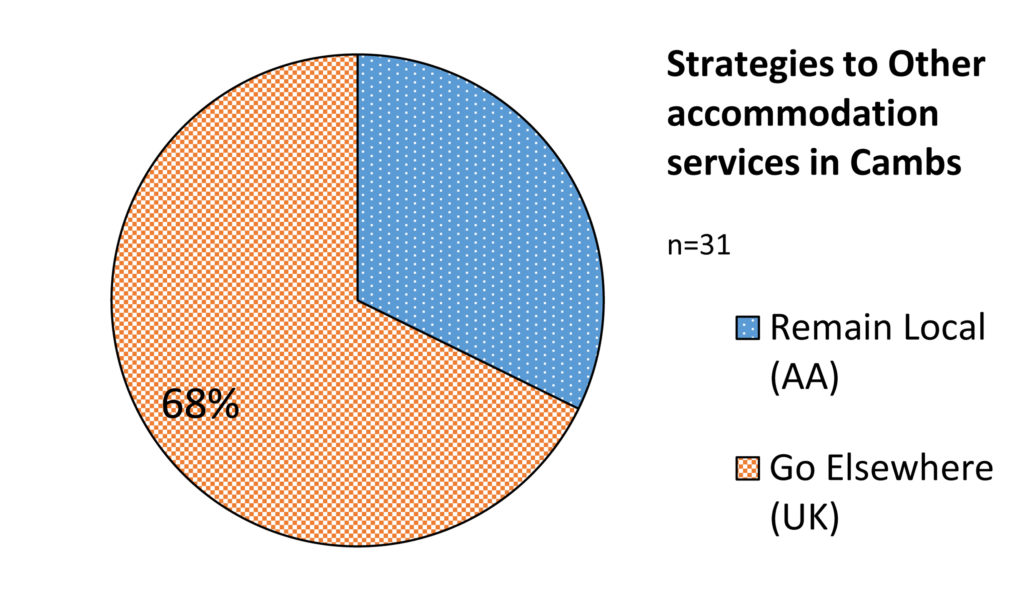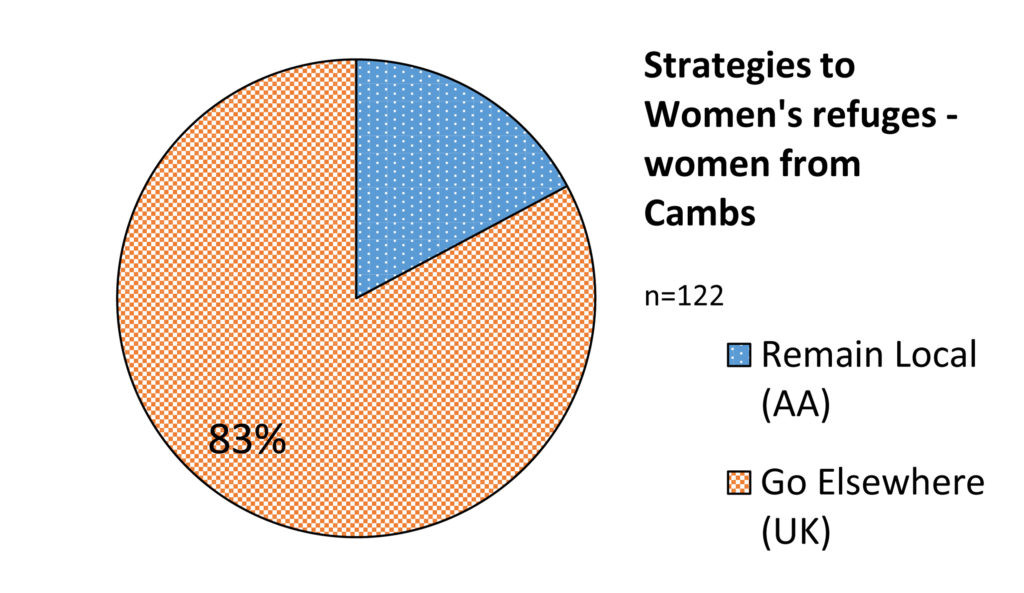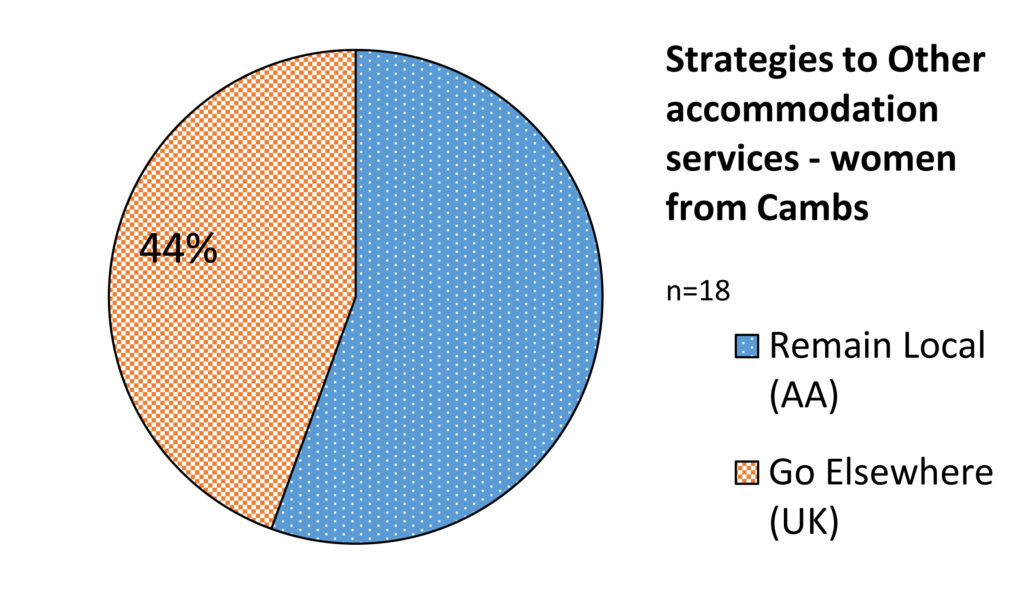How do you assess the need for domestic abuse support in a Local Authority area?
It is well-known how hidden domestic abuse is – that many women keep their experiences secret and never seek formal help. Others do seek help, but are turned away. Others do not disclose the violence or abuse until they are safely away from where the perpetrator might find them.
But over and above all that… assessing need in an area depends on what the word ‘in’ means…
- Is it the women and children already in an area?
- but what about the many forced to move away because of the abuse…
- Is it the women and children coming into an area to seek help?
- Is it both?
The Domestic Abuse Act 2021 requires Local Authorities (Counties and Unitary Authorities – and London as a whole) to “assess, or make arrangements for the assessment of, the need for accommodation-based support in its area”[1].
But how can they do that?
To take the example of one year of help-seeking to services and one local authority – Cambridgeshire:


The local authority should be able to count the number of women who manage to access formal services – women’s refuges and other types of accommodation – due to domestic abuse; and include that in their ‘needs assessment’. But that depends – of course – on them providing services in the first place…
And the majority – it can be noted – do not actually come from Cambridgeshire…
And then, what about Cambridgeshire women and children? – where do they go to access services?
Well, some ‘remain local’ – remain within Cambridgeshire – but many (and the vast majority of those needing women’s refuges) go elsewhere[1]…


So, should Cambridgeshire be including these as well in its ‘needs assessment’? – maybe if it provided more services they would have been able to stay in the County… maybe they wouldn’t…
Certainly, Cambridgeshire is very unlikely to have any data on all those who ‘go elsewhere’ as the whole point is that they are escaping the abuse – they are not going to wait and inform the authorities of their plans.
So, any local authority – like Cambridgeshire – is only going to be able to count those who come into its area if it already provides services for them to come to; and is unlikely to have any idea of the numbers of its women and children who flee elsewhere.
With the best will in the world, a very partial needs assessment is all that is possible… and there is a perverse incentive to reduce or limit service provision, so that there is less expressed need in your area – and therefore less ‘need’ to provide services for…
Is this what local authorities are currently doing? Given that the ‘needs assessments’ are not made public, it’s impossible to know…
But it’s clear that if you wanted to design a system to fail to meet domestic abuse accommodation needs, then this would be a good way to do it….
[1] Bowstead, Janet C. 2021. “Stay Put; Remain Local; Go Elsewhere: Three Strategies of Women’s Domestic Violence Help Seeking.” Dignity: A Journal of Analysis of Exploitation and Violence 6 (3): 4. doi:10.23860/dignity.2021.06.03.04. https://digitalcommons.uri.edu/dignity/vol6/iss3/4
[1] Domestic Abuse Act 2021 https://www.legislation.gov.uk/ukpga/2021/17/section/57/enacted
